
The first two major settlements in the South Island were at Dunedin (Otago) in 1848 and at Christchurch (Canterbury) in 1850.
The Dunedin settlement was sponsored by the Free Kirk of Scotland and Dunedin was named after Edinburgh. The first settlers were landed at Port Chalmers in March 1848. The Otago Centennial set was issued on 23 February 1948 and withdrawn on 31 July.
The Christchurch settlement was sponsored by the the Church of England and the first settlers arrived at Port Lyttleton in December 1850. The Canterbury Centennial set was issued on 20 November 1950. Both sets were printed by Bradbury, Wilkinson & Co.
Otago Centennial 1948
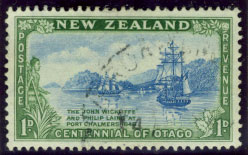
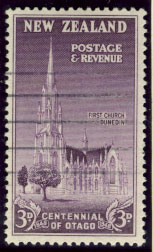
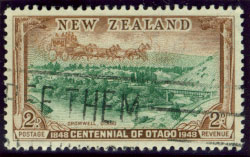
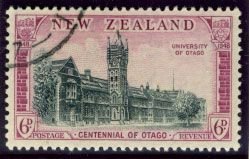
The sheets were in 12 rows of 10 with the 3d in 10 rows of 12. The 1d and 2d had frame plates 1 and 2 and centre plates A and B and all four combinations exist. Two plates were made for the 3d, but stamps were only printed from plate 2. The 6d had centre plate A and frame plate 1.
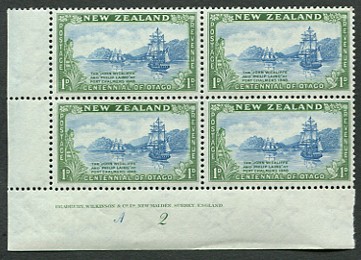
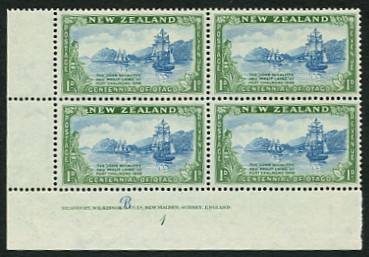
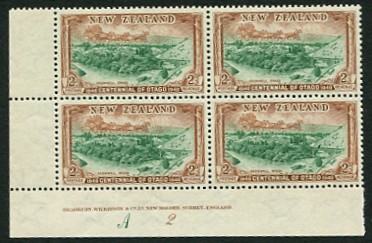
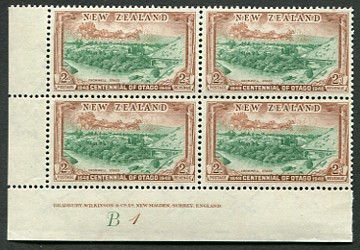
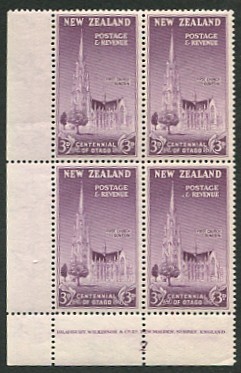
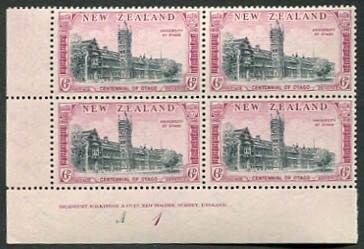
The watermark was multiple NZ and star (sideways on the 3d) and the perforation was 13½.
The set was withdrawn from sale on 31 July 1948.
Commercial mail to Malta
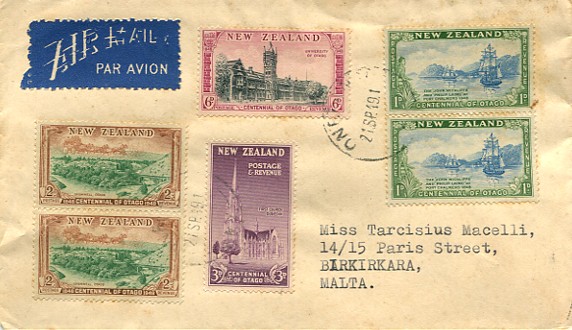
Commercial cover to Malta postmarked 21 September 1949.
Canterbury Centennial 1950
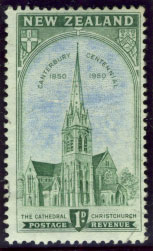
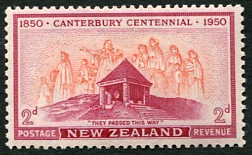
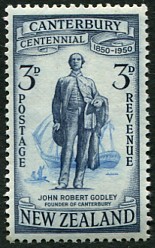

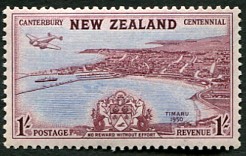
The sheets of the 1d and 3d were in 12 rows of 10 with the 2d, 6d and 1/- in 10 rows of 12. The frame plates for each value was 1 and the centre plate A.
The watermark was multiple NZ and star (sideways on the 1d and 3d) and the perforation was 13½.
Canterbury Centennial International Philatelic Exhibition

Registered cover to England posted at the exhibition on 20 November 1950.
The above information is taken from The Postage Stamps of New Zealand Vols 2 and 4, published by the Royal Philatelic Society of New Zealand in 1950 and 1964. All scans were made by the author.